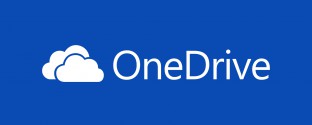 As mobile devices slowly become prevalent components of the average person’s daily life, AdMob has capitalized on this growing trend by serving mobile ads to these small-screen devices. Based in the Silicon Valley, it is one of the world’s largest mobile advertising networks, serving billions of personalized ads each month to mobile devices. Specifically, AdMob helps publishers monetize from traffic on their sites and advertisers reach new target audiences. The company also offers a distribution platform for application developers to get their apps out. Given all this, it comes as no surprise that Google bought this company.
As mobile devices slowly become prevalent components of the average person’s daily life, AdMob has capitalized on this growing trend by serving mobile ads to these small-screen devices. Based in the Silicon Valley, it is one of the world’s largest mobile advertising networks, serving billions of personalized ads each month to mobile devices. Specifically, AdMob helps publishers monetize from traffic on their sites and advertisers reach new target audiences. The company also offers a distribution platform for application developers to get their apps out. Given all this, it comes as no surprise that Google bought this company.
AdMob’s ad network spans across multiple mobile platforms, including the iPhone and Android. AdMob provides feedback on web analytics and application performance stats for both publishers and advertisers. The company hopes that these details will help their clients make better decisions by targeting appropriate segments of the market for maximizing profits. Those numbers also provide trending information so that customers can anticipate and prepare to monetize on a spike in traffic.
“It’s clear that mobile advertising is becoming a much larger part of our clients’ and partners’ strategies and with this acquisition, it’s now a central part of our own business,” said Google VP of product management Susan Wojcicki
Google’s acquisition of AdMob makes perfect sense. Google’s number one source of revenue is advertising. As the internet-powered mobile segment grows, it’s important for Google to be the number one advertising service. Even though Apple didn’t manage to strike a final deal with AdMob, they too announced their plans to launch a competing service, the iAd platform. Mobile advertising is also emerging differently than web advertising did. Ads are more relevant and targeted to users than ever before. For instance, AdMob ads will heavily rely on geo-location. When a banner for a local restaurant appears within a web page or mobile application, viewers will have the option to call the company, get navigation-based directions to the location, or even load an interactive video. The company hopes that these better-suited ads will offer improved click rates for publishers and customers for advertisers.
Ultimately, Google has reinforced its intent to provide smarter advertising by combining its resources with AdMob’s mobile market share and technology. This move does not come as a surprise, but rather serves as a benchmark, indicating how the company is positioning itself for the future.
Links: Google Press Release







I’m not suprised by Google’s move to acquire AdMob.
Mobile advertising will be next big thing for advertisers
who want to reach a target audience on a large scale basis.
With Pay Per Click Cost going throuhg the roof, more and more
advertisers are switching to mobile advertising because it’s
cost effective with the capability of reaching billions of
mobile users.
Smart move by Google to acquire the mobile advertising giant AdMob.
when google invests in something, it means there is a huge potential in this market otherwise they would not have invested here…so we must also keep tracking this field which may also benefit us!
It was a surprise to see that Google had acquired AdMob–just as I was upgrading to a Mobile version of my site, the advertiser used by Mippin is now linked back to Google. Interesting.
I just registered with AdMob today to advertise, but was surprised that Google had purchased it. I’m not surprised from a business standpoint as Google wants to assure that they have their fingers in every possible media to retain they leadership.
Someone mentioned “cost effectiveness” of mobile marketing, but I just hope that with Google’s entry into this market, this is not the start of rapidly escalating advertising costs. In addition, if Google starts with their complicated formulas,and rules to “reward” or “punish” advertisings, then it won’t be long before mobile advertising is ruined just like their internet search engine, and the “little guy” is shut out again.
I just hope I’m wrong about all this.
Google is a big giant and they have very interesting sales team. The investments in anything by Google means Big Scope. Google is a trend setter so one should try to follow the trends intelligently.